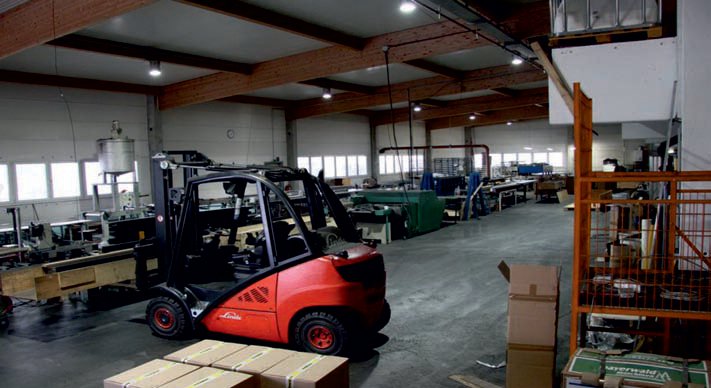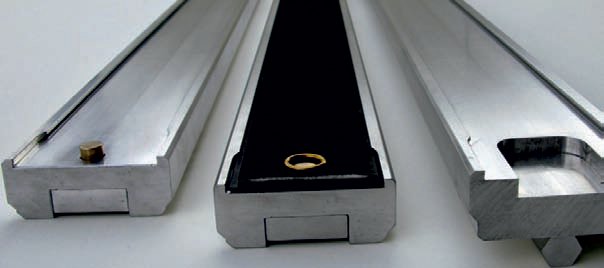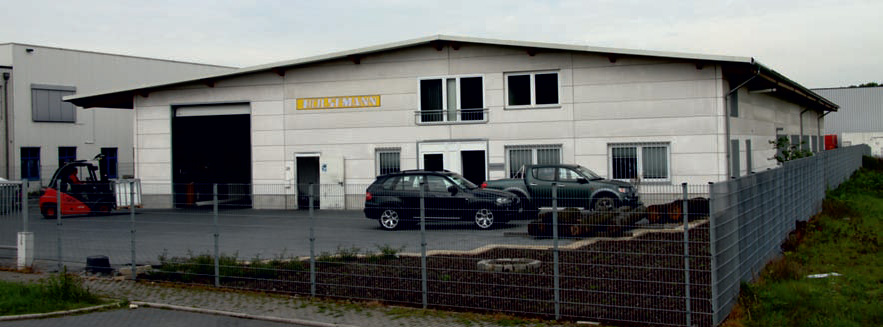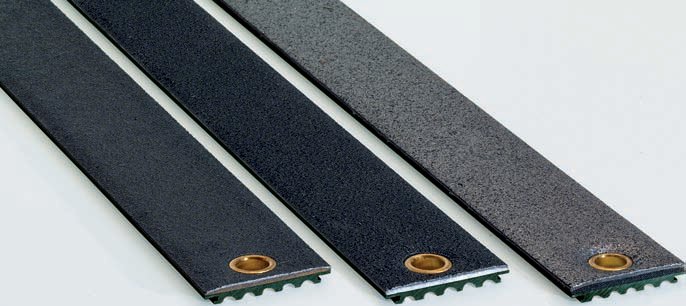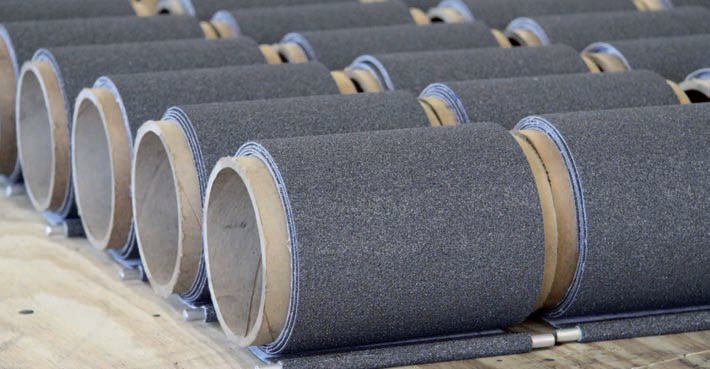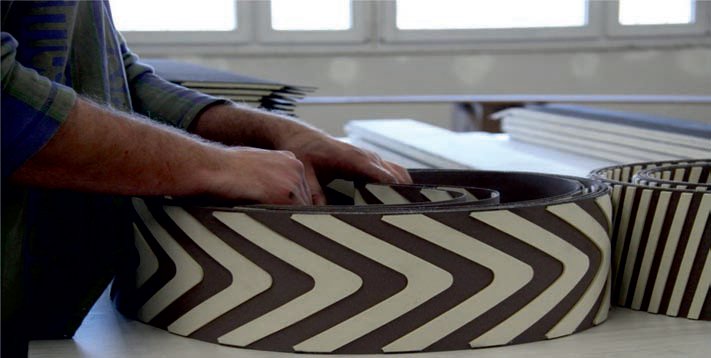Smooth operator
22 January 2014Hülsemann GmbH of Oberhausen has been supplying graphite and sanding technology to the furniture and panel manufacturing industries for around 30 years. Mike Botting visited the company’s headquarters to see what they have to offer.
Founded in the 1980s by Thomas Hülsemann, the company that bears his name became a 'GmbH' in 1995. Mr Hülsemann began by developing new processes for the manufacture of the pressure belts which run between the pressure rollers and the abrasive belt on all sanding machines.
Initially, he produced pressure belts for manufacturers of sanders for the furniture industry. These included well-known names in the machinery industry such as Heesemann, Bütfering, Costa, Tagliabue and Weber.
In time, Mr Hülsemann enlarged the business by complementing his product range with graphite-coated canvas belts. The coated canvas was bought in and cut precisely to size on specially-developed machines in Hülsemann's factory in Oberhausen.
The company then moved on to making felt plates for sanders used in the furniture industry.
"Step-by-step, we became increasingly well-known in the industry and in 1994, my father needed more space for the business," explained Johannes Hülsemann, who is responsible for sales in the family business. "So in 1994, he moved from a small workshop to his first factory, not far from where we are located today."
From the new premises, Hülsemann GmbH started to make press pads, or 'Sliding Liners' for the two main manufacturers of wide-belt sanders for the global market: Steinemann of Switzerland and Imeas of Italy. This represented a new market for the company, building on the experience gained in the smaller furniture sander business.
"For the past eight years, we have had a contract with Steinemann to supply Sliding Liners for its machines and all Steinemann sanders worldwide are equipped with them. The Steinemann brand name for the liners is the 'Sprint Insert'," explained Mr Hülsemann.
As the company grew, more factory space was needed, so in 2006 it moved again to its current premises, still in Oberhausen. Here it has a 3,300m2 workshop, with offices, in a single-storey building.
The move enabled Hülsemann to install CNC machines to manufacture the aluminium bar which holds the Sliding Liner and the company is able to tailor-make such bars for any Steinemann or Imeas sander, including older models.
The company has doubled its number of staff in the last year to cope with demand and plans to take on more in the near future.
It was soon evident that yet more space was needed for the growing production of the company and so the adjacent site was purchased and in 2014, Hülsemann will construct a three-storey production and four-storey office building on the site, which occupies the same ground area as the current factory. Some of the office space will be let to tenants.
The site's electricity transformer has already been relocated onto the new site, to free up space on the existing one.
"When we have the new space, we will enlarge the Sprint Insert production, increase our stock of graphite varieties and enlarge our pressure belt section," said Johannes Hülsemann, who is 25 years old. "Currently, the pressure belt operation is quite small but it offers a lot of potential for growth," he said.
"We will also start to buy in raw canvas and produce our own graphite-coated material, rather than buying it in ready-coated. Initially at least, this will only be to supply coated canvas for our own production needs." Currently the market for coated canvas is dominated by one global supplier so Hülsemann would like to secure its own inhouse supply.
Another plan for the new premises is to set up an apprenticeship scheme to train office staff to take some of the load from Johannes and his father and mother, who are currently all involved in the administration of the business, as well as Thomas Hülsemann's key role in developing new products and controlling production. This is very much an international business, so applicants for the apprenticeships will be expected to speak English and at least one other foreign language, said Johannes Hülsemann.
The Sliding Liner
Turning to one of the company's most important patented products, the Sliding Liner System, Hülsemann claims that the graphite padding can be changed in a few seconds and that the best possible sanding results are obtained through the minimal tolerance built into the system.
Meanwhile, it is impossible for the padding to be dislodged and no "complicated exchange or repair of the aluminium beam is required," says the company's brochure.
A metal eyelet is inserted into the end of the pad and this locates on a brass lug, machined inhouse, on the aluminium carrier bar, or sanding shoe, holding the pad in place and ensuring that any electrostatic charge is dissipated.
There are three grades of pad hardness available in the sliding liners. The liners themselves are made of heat-proof plastic with special laminated padding material, in standard widths of 40 and 55mm and lengths up to 3.5m.
The three hardnesses offered are 'Latex', 'PES' and 'Foam'.
Latex is the hardest and offers a rubber hardened polyester fleece, which is directcoated. It is brown in colour.
The PES grade has a polyester-needle felt, also directly coated, and is the medium-hard option, white in colour.
The soft grade liner is made of polyurethane foam, re-compressed and laminated. This one is black in colour.
Hülsemann also offers its "Green Line" patented Sliding Liners, which are a more recent development of the previously-described system, which the company says has been established and approved for some years.
An obvious difference from the standard system is that the bottom surfaces of Green Line liners are grooved, which Hülsemann says offers cooling of the sanding process, better handling, and a saving in both cost and weight. Green Line can be fitted to all existing pad systems.
Padding materials
Yet another patented product range is comprised of the direct-coated padding materials themselves.
"These materials, which we have recently developed, combine the characteristics of padding and sliding coating in one product," explained Johannes Hülsemann. "Our special method of manufacture offers a low thickness tolerance to give the best sanding results," he said. "Meanwhile, the lack of an adhesive seam between the graphite twill and the padding material lowers the cost and makes it impossible for the graphite and padding to separate, while a tear-proof binding agent removes the risk of the graphite layer breaking."
Three versions are available: A latexbound fleece material with a hardness of 0.55; a PES polyester-needle felt version with a hardness of 0.40; and a foam version made from a re-compressed polyurethane foam base material with a specific gravity of 150.
The first two types are 4.5mm thick, while the third is 6mm.
Segmented pressure belts
For wide-belt sanders such as those used in the panel industry, Hülsemann offers segmented pressure belts as a support belt. These are made of heavy-duty cotton twill, with a felt thickness of 3mm as standard, though other thicknesses can be supplied, while the design of the raised twill chevrons can be made to order.
The company also offers 10 different graphite canvas materials as pad coverings, in five different grades, while felt metal plates/sanding inserts have carrier plates made from white polished spring steel for use in wide-belt sanding machines.
So Hülsemann has developed a range of products specifically for the sanding process and looks set to continue its growth in this specialised market.
"My father [50] is very much the force behind the company and developed many of the machines we use in the factory, both for production and testing," said Mr Hülsemann.
"If you have a sanding problem and need a tailor-made solution, my father will develop that solution and we already hold several patents on different coating systems,"
